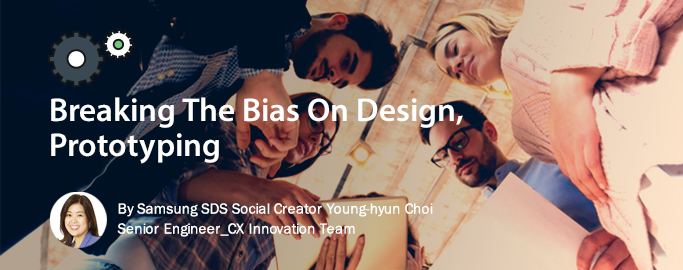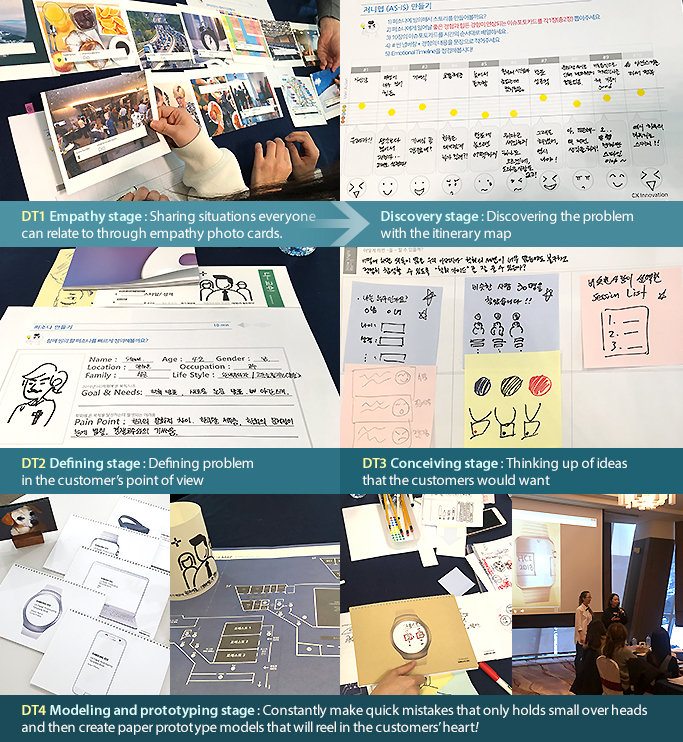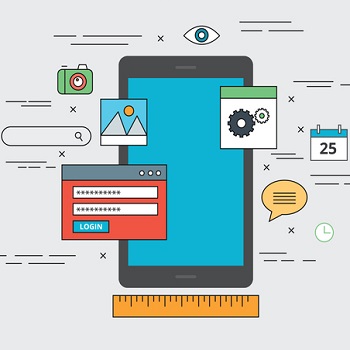
For our second breaking of prejudices we will talk about prototyping, which removes prejudices about design. The prejudice mentioned in the article “#1 Breaking The Bias On Design” can be broken through prototyping.
Prototyping is a ‘non-work playful activity’ that is created together to make each participant better. A playful activity is an act of immersion that provides immersion through pure purposes and motivation and in the end allows you to gain joy from it. With a pleasant atmosphere each and everyone one can understand and care for each other. Each participant can genuinely and quickly create what each wants. What was at first not so sleek can be refined through the iterative process which eventually will lead to a place that will ‘touch your hearts.’ As such, prototyping is a process which customers communicate and create what they wanted in their mind and solve the problems one by one.
Samsung SDS held a design prototyping workshop at the HCI 2018 conference, which was opened under the theme of expanding the boundaries, earlier this year. The participants of the workshop actually experienced the moment their bias on the design were broken and the moments when their imagination was realized. The participants of the prototyping workshop met for the first time without any prior knowledge about the members, and included both conference related field professionals as well as non-related professionals. In order to break the ice, themed cards (the themes included examples like travel, pets, music, movie, food, and etcetera) were used. They created comradery by sharing interests and sharing stories while sitting together along the table. The workshop was held under the theme of “How can I attend the HCI conference more efficiently” regardless of the participants’ conditions or qualifications. In the first stage of the workshop, they used the special photo cards to talk about the situations that all can relate to under the special environment of HCI conference 2018. For the second stage they summarized, shared, and tried to find consensus on the times they felt that they had the most problem when handling customers, by marking their problems on the customer itinerary map in chronological order.
The participants begin to break their bias on design by contemplating on the idea that ‘they are all designers because they have the ability to choose whichever the better choice is’. In order to transform the uncomfortable situations they have experienced in the HCI 2018 into a better experience and environment, they have unanimously agreed and extracted information on the cause of these situations. They have also tried to figure out of the point of view (POV) of a customer in a sentence with the agreed target customer definition (persona: It means a customer definition in Design Thinking). We have especially thought of innovative ideas through pictures and tried to model (actually materialize) the ideas suggested through the pictures by paper prototyping. Just like a young child with pure motivations and goals, by doing these activities the participants were able to gather ‘what they truly wanted in their hearts, the moment when all the inconveniences of HCI 2018 disappears (what the customer would want to experience the most); communicated and created together’, and therefore they have experienced the moment where ‘work is transformed into play.’
IDEO, a design company well known for their innovative design process used Rapid Prototyping to quickly produce the ‘gun shaped surgical tool used by surgeons’ through everyday things like (film canisters, scotch tape, laundry tongs, and glue sticks). As such, if you communicate with each other and collect your ideas, you can easily find what you want quickly and rather easily.
The 2018 HCI conference’s Design Thinking workshop had unfamiliar and awkward moments in the beginning, but we were able to imagine and realize the moments that we would all like to immerse ourselves in and during the three hours of the workshop we were able to think of ideas and implement them so that we can solve the inconveniences found in the HCI conference. Samsung SDS will continue to develop and disseminate the Design Thinking process and strive to innovate the business culture.

- DT1 Empathy stage: Sharing situations everyone can relate to through empathy photo cards. → Discovery stage:Discovering the problem with the itinerary map
- DT2 Defining stage: Defining problem in the customer's point of view
- DT3 Conceiving stage: Thinking up of ideas that the customers would want
- DT4 Modeling and prototyping stage: Constantly make quick mistakes that only holds small over heads and then create paper prototype models that will reel in the customers' heart!

